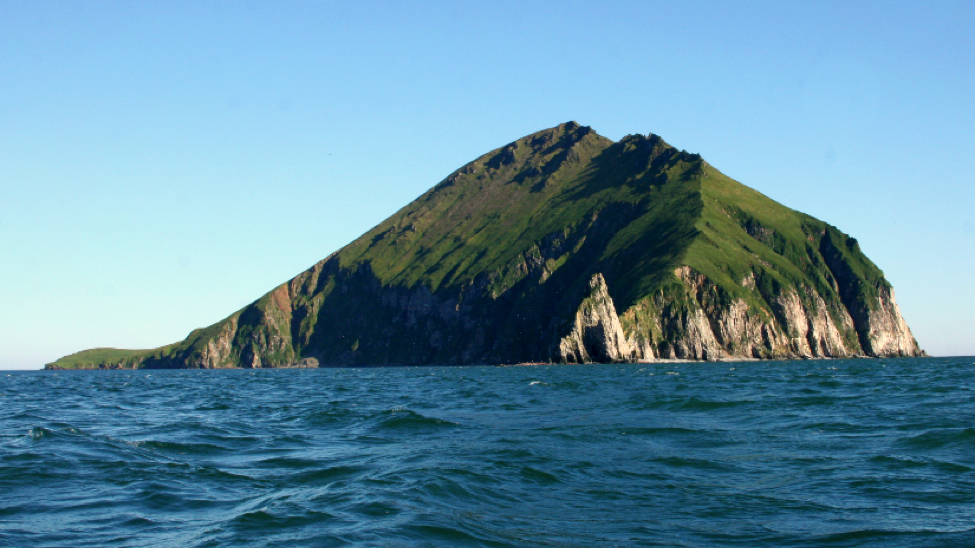The beaches along Round Island, Alaska are the preferred haul-out zone for thousands of summering walruses. Diane Johnson volunteered with Alaska Fish and Game on the remote island this summer and gives a unique perspective from the cliffs and beaches.
“If you find yourself watching the Walrus Cam, you might also find yourself wondering what it would be like to watch walruses from the cliffs on Round Island with your own eyes and maybe a pair of binoculars. Well, Round Island welcomes visitors! I have been lucky enough to be able to volunteer on the island this summer, I love it here, and I thought some others might like to know what it is like to visit.
The island is two miles long, and rises from the ocean to a 1400 ft peak. From the boat approaching the island, it looks like it’s entirely mountain. There are no trees, only grasses, willow shrubs, flowering plants, ferns, mosses, and tundra, on which blueberries, crowberries, and lowbush cranberries are ripening. Their seeds may have blown, floated, or ridden over in animals’ digestive systems, or spread slowly across the land when the sea level was lower.
The walruses come and go in waves from the island’s beaches, sometimes by the hundreds, staying or leaving for days at a time. Walruses on Round Island are all males; females and their young remain further north on the sea ice in the Bering Sea, which is relatively shallow and offers them easier access to clams on the ocean floor. The island’s cliffs protect males from dangers that might come from land, and its status as a sanctuary protects them from human disturbances like plane and boat traffic, or poaching. The walruses seem unaware and undisturbed by humans watching them lay around, poke each other, and grunt and growl and chime from Round Island’s clifftop viewpoints.
Calm days are rare on Round Island, which is one reason so few visitors make the journey out here. Only a handful have come this summer, despite a campground of available tent platforms overlooking the ocean, a cozy visitor cook tent equipped with a propane stove, two miles of maintained trails linking the viewpoints and campground, and welcoming Fish and Game staff. Getting to Round Island requires flexibility and determination. After flying from Anchorage to Dillingham and then Dillingham to the village of Togiak, visitors have to cross their fingers for navigable seas. Winds can restrict the final leg of travel for a day or days, perhaps even a week in May or August, the shoulder seasons, when storms roll in steadily. If you are determined to visit Round Island, plan several extra days into your travel itinerary!
Round Island’s quiet exists due to its relative inaccessibility. One can hear wind in the grass, waves and walruses, sea lions barking, and the calls of foxes, ravens, songbirds, and sea birds, and few human voices. Throughout most of the summer, the only voices on the island are those of two Alaska Department of Fish and Game staff members who stay in a cabin near the campground. The animals, however, are active and everywhere. Round Island’s crowds are crowds of animals.”



